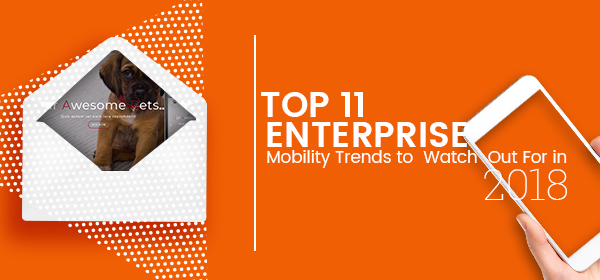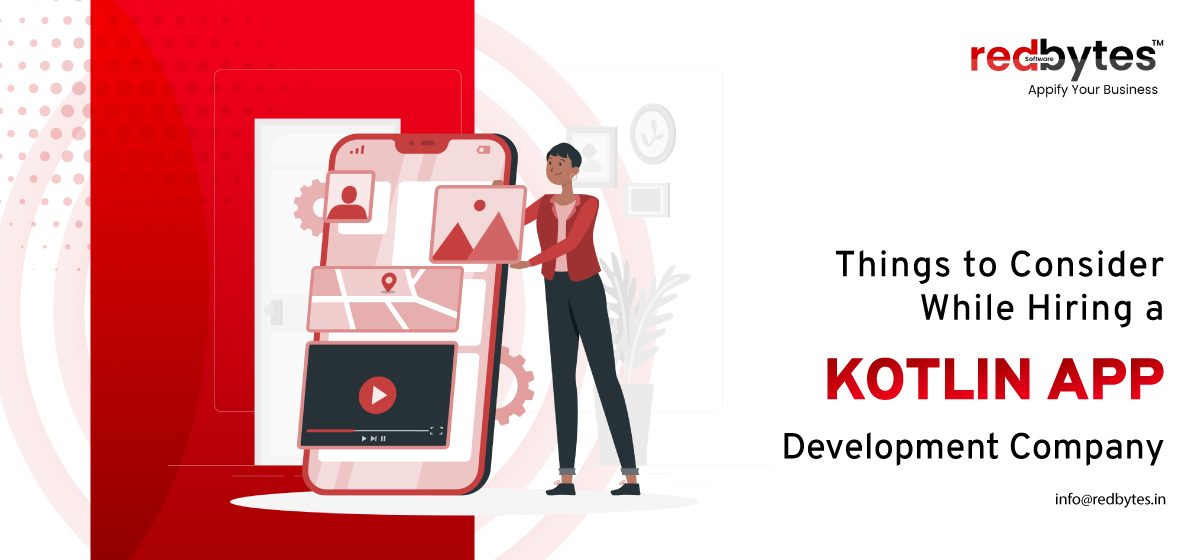2017 was the proof that we are clearly living in the era of digital revolutions since businesses realized the potential of emerging technologies and adopted mobility to simplify organizational processes. With enterprise mobility being used across a range of industries, companies experienced great boost in growth management and employees engagement by reinventing the routine processes.
Since consumers engage more on their personal devices, enterprise mobility has a greater scope of delivering more innovative experiences. In 2017 IoT, AI and BYOD ruled the top technological trends with mobility being the integral essence of organizational productivity. industries that leveraged the power of IoT and wearable technology observed significant growth and yielded more output through faster employee collaboration.
This discussion leads us to top 11 enterprise mobility trends in 2018. Let’s take a look:
1. The Regime of Artificial Intelligence
AI has become more heroic than ever and is increasingly pervading the space of digital solutions as the year goes on. AI’s machine learning capabilities have been a central focus to the buzz last year. Machine learning technology is expected to go even further with many industries sincerely considering the integration of automation in their everyday processes. Despite such excitement, there are companies that have ignored the usability and importance of AI for their business operations. In 2018 a significant surge in integration of artificial intelligent machines is likely to be observed as innovative companies hope to leverage and learn more about the power of AI and machine learning together.
2. IoT Continues to Impact the Growth
IoT is a second most used phrase in the domain of enterprise mobility. Due to interconnected devices in place, the adoption of mobility in enterprises seems more fruitful. Through IoT, businesses can make precise decisions at the right time by reaping information from user’s daily interactions and shaping the map of their behaviour pattern. With BYOD becoming a chief consideration for growing enterprises, the rise of IoT as connected devices combined with enterprise mobility will surely drive productivity and growth for technology-ready companies in 2018.
3. Cloud gets Louder
The practices of enterprise mobility are further about to get enhanced with increased migration to cloud platform. Due to improved quality and maturity of cloud services, businesses can have easy access to information whenever and wherever they need without bearing massive cost. This is why Big Data has moved to cloud in order to provide more power to the idea of enterprise mobility. Despite the concerns of security big organizations, enterprise solutions a have moved to virtual platform of cloud services at lightning pace. Also, to alleviate security challenges and vulnerability issues, companies have begun to prefer hybrid structures so that apps with critical information are hosted in local system whereas those with little privileged information stay on cloud.
4. Lowered Dependency on Computers
The word mobility is not just deciphered as people and things going mobile, but it also proposes how the increased attention towards commercials apps will boost the mobile usage and limit bigger computing devices like on-premise computers. As customers fiddle with their handset for even the smallest of their needs and inquiries, enterprise mobility will revolutionize how customers engage with the business and gain more interactive experience.
5. Enterprise Mobility Management will Pick Up
Since enterprises are prepared to unleash the full potential of mobility, they have commenced moving their in-house processes to digital devices. This approach has helped them improve communication standard, work flow efficiency, decision making as well as their business process cycle. On account of this, there will be a possible rise in using EMM (Enterprise mobility management) software for the purpose of achieving credibility and security resolution.
6. BYOD will Grow more Rapidly
According to a research, the number of employees using smart phones to collaborate and manage their tasks at work is likely to reach 2.5 million by 2018. This means there will be less traction on hardware maintenance and more on dynamic enterprise mobility. Due to this BYOD adaptation, work environment will grow more flexible and employees will experience enhanced productivity within or outside the premise. Its the ability to transform business processes and bring down operational cost makes BYOD the most thought-worthy point for companies in 2018.
7. Chatbots will Impact Employee Conversations
Enterprises can take ample advantage of Chat bots based on AI technology. Intelligent robots can take control of most of employee interactions helping them with their queries, FAQs, holiday requests, meetings management and much more. Companies will helps employees free up their time by scheduling tasks for chat bots so that they can engage with more crucial tasks. Also, businesses will gain more precise insight into their employees by learning from their chat bot interactions, thus improving their efficiency and performance.
8. Burgeoning Focus on Functionality
Using newer methods to enhance the user experience and digital interactions is becoming the main motto of building apps. With this idea playing a vital role, the focus on improving functionality of mobile apps is gaining much attention among enterprise market. To engage more users for longer life cycle, rich features are designed which ultimately makes the modern apps responsive, fast-loading and compact in use. As every bit of companies is going mobile, using data analytics and constant monitoring, businesses can easily connect with users at reduced cost of hardware maintenance. In 2018 we will see more sophisticated functionalities simplifying business operations.
9. Location-based Services will Grow Predominant
More and more customers are opting for mobile apps that offer extra services and care for their users. Thanks to location-based services, consumers can use apps that interact with their GPS for local geographical information and suggest personalized solutions. Such services include finding nearby spots like hospitals, theatres, coffee shop, malls, restaurants and barber salons. In 2017 relevance of offers made location-based services more desirable, which will continue to grow in 2018 as anticipated. With innovations coming handy, mobile apps can even notify users for the nearest store with their favourite merchandise.
10. Growing Interest in Instant Apps
This is another new trend that is likely to dominate the digital market soon in 2018. Even though Cloud computing offers pretty good amount of benefits, entire migration of software development to cloud is still doubted because of obvious security issues. This is where launching instant apps directly to users come to assist. In the future, enterprise mobility will involve such instant apps that do not compel users to visit the app store for search and download. Due to quick streaming and access like websites, instant apps will save a lot of time, resulting in one of unusual revolutions for enterprise mobility move.
11. Veteran Developers will be Sought Extensively
Since new innovations are in demand and quickly adopted, businesses rely exponentially on those developers who are skilled to invest technological insight into driving more growth. Due to emergence of technological use in business operations, brand marketing and employee engagement, the demand for veteran developers is soaring high. Developers with their experience and talent can helps businesses overcome competition and other challenges in the relevant market. This is the reason many enterprises are developing their own in-house training modules to harness and hone the skills of software developers.
The Future of Enterprise Mobility
With almost 67% employees relying on their own devices at work, there is no surprise how flexible working system has contributed to the consideration of BYOD. Mobile technology can truly improve employee engagement, cost reduction and process management.
However, security is also a big concern for now. Therefore, even though enterprise mobility is on the rise, businesses still need to mull over their process-specific requirements and scrutinize their financial goals, ROI, project size and affordability. This is why enterprises looking to adopt mobility must build a strategy to achieve effectiveness.
Conclusion:
As technology evolves, we will experience much more polished services through digital innovations. Enterprise mobility is one promising sphere where transformations can make vital difference. With rapid adoption rate across industries, enterprise mobility has already shown it has more to offer and revolutionize than marketers and businesses can imagine. With an informed strategy, enterprises can leverage mobility to shape the future of their business.















